Proprioception, or kinesthesia, is the sensation of body position and movement. It is a feeling that is very personal and is usually unconscious.
Examples of when people are relying on proprioception include standing on one leg or throwing a ball without looking at the throwing arm.
Typically, proprioception exercises aim to prevent injuries in athletes and maintain mobility in older individuals. Without proprioceptive training, older adults, in particular, may have a higher risk of falling.
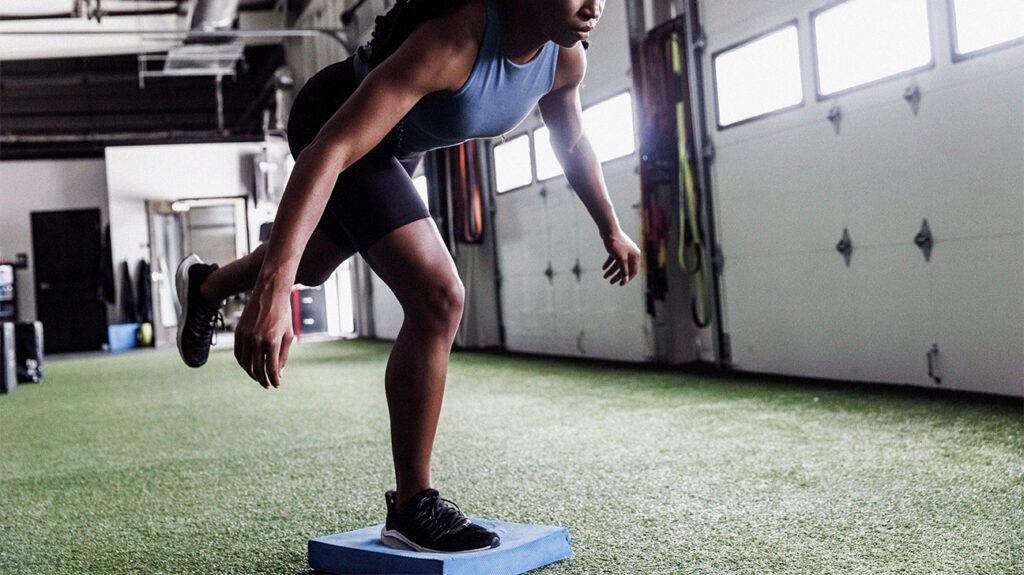
Here are some exercises that can help improve proprioception.
1. One-leg standing balance test
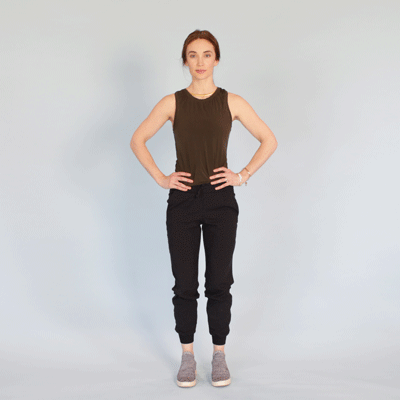
- Begin with feet hip-width apart. Then, place hands on hips.
- Shift weight onto the left foot and gently lift the right foot off the ground a few inches.
- Hold the position for 30 seconds and switch sides. Repeat this movement 2–3 times.
How well a person completes the one-leg standing balance test
2. One-leg three-way kick
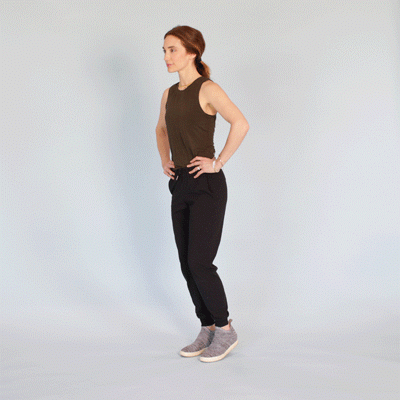
- Begin with feet hip-width apart. Then, place the hands on the hips.
- Raise the right foot a few inches in front of the body. Hold the position for 2–3 seconds and bring the right foot back to center without placing it on the floor.
- Lift the right foot to the side of the body a few inches off the ground, hold for 2–3 seconds, and bring back to center without placing it on the floor.
- Kick the right foot back a few inches off the ground, hold for 2–3 seconds, and bring back to center.
- Place the right foot on the floor.
- Switch to the left foot and repeat on each side for 2–3 times.
3. Cone pickups
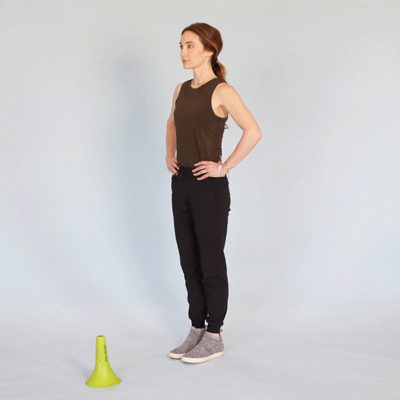
Before beginning this exercise, engage the core and squeeze the glutes (buttocks) to balance.
- Place a cone 2 feet (60 cm) in front of the body. Then, with hands on hips, lift the right foot a few inches off the ground.
- Bend at the hips to pick up the cone using the left hand, extend the right leg backward, and lean toward the cone.
- Return to the starting position by bringing the right foot back to center and placing it on the floor, then finally stand tall with the cone in the left hand.
- Switch sides and repeat 3–4 times.
4. Bird dog
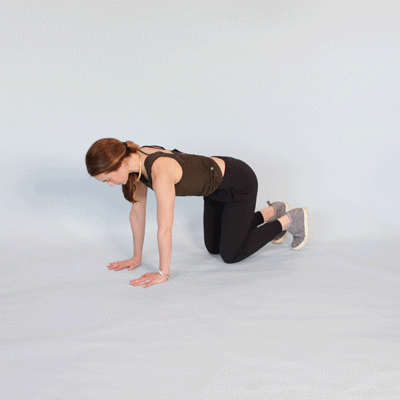
- Begin in a crawling position on all fours. Ensure hips are in line with knees and shoulders are in line with wrists. Keep the back and neck straight by facing the floor.
- Extend the left arm in front and the right leg back. Use the right arm and left leg to balance.
- Hold for 2–3 seconds, then switch sides.
- Repeat 8–12 times.
5. Reverse lunge
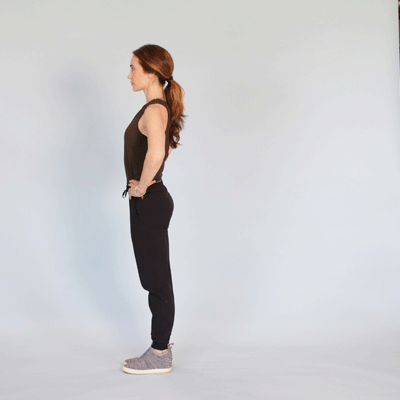
- Begin with feet hip-width apart. Then, place hands on hips. Steady the left foot and shift more weight onto it. Take a large step back with the right foot.
- Ensure the ball of the right foot is on the ground and the heel is up. Lower the right knee toward the ground so that it is at a 90-degree angle. The left knee should also bend at 90 degrees.
- To get back up, push down into the left heel, squeeze the glutes, and engage the core. Lift the body back to standing.
- Repeat 8–12 times.
6. Tightrope walk
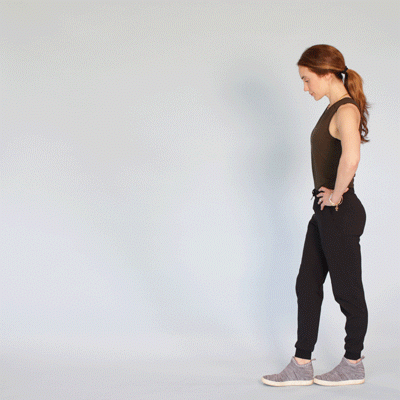
- Using a rope or some tape, create a straight line 3–6 feet (1–2 meters) on the floor.
- Stand with feet hip-width apart. Then, place hands on hips.
- Walk beside the rope, carefully placing one foot in front of the other like walking on a tightrope.
- Try to walk to the end of the line without losing balance. At the end of the line turn around and walk back.
- Repeat 3–4 times.
7. Tree pose
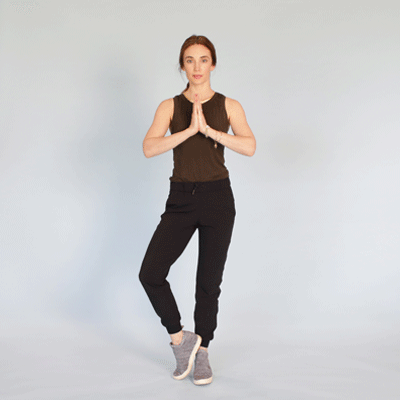
- Begin with feet hip-width apart and palms pressed together in front of the chest.
- Steady the left foot and shift weight onto it.
- Gently lift the right leg off the ground. For extra balance, place one hand on a wall for support.
- Place the right foot on the left inner thigh, or inner calf if this is difficult. The knee should be pointing away from the body.
- Hold for 10–20 seconds or however long is comfortable, then switch sides.
8. Banded tri-planar toe taps
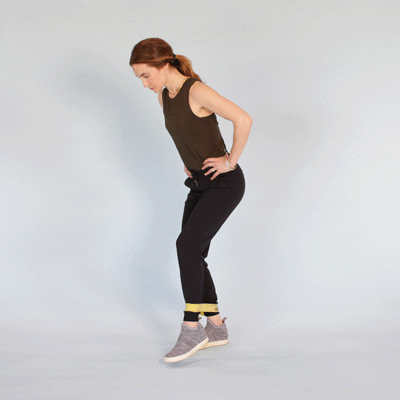
- Put a loop resistance band around the ankles and stand with feet hip-width apart.
- Shift weight onto the left foot, sink into a quarter squat, and hold.
- Tap the right toe forward, to the side (away from the body), and then behind the body. If this is difficult remove the loop.
- Repeat ten times, then do the same on the other side.
9. Flamingo stand
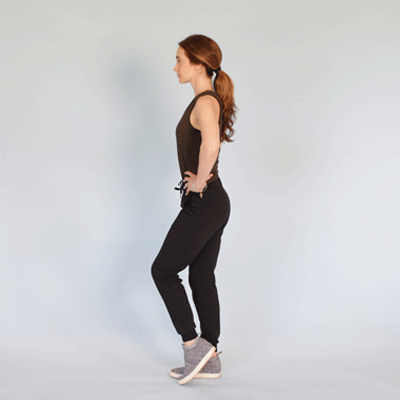
- Begin with feet hip-width apart. Then, place hands on hips.
- Shift weight onto the left foot and bring the right leg up, so the knee is at a 90-degree angle. For extra balance place one hand on a wall for support.
- Hold for 10–20 seconds, or however long is comfortable, then repeat on the other side.
10. Sumo squat to one leg
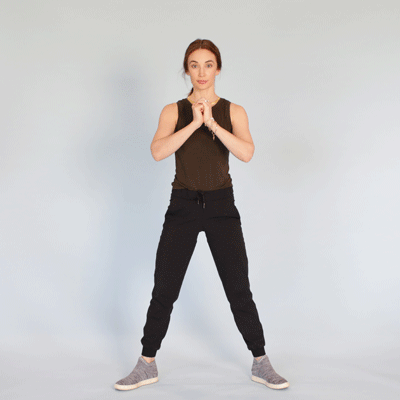
- Begin with feet slightly more than shoulder-width apart. Turn the feet away from the body at a 45-degree angle.
- Engage the core and bend the knees—leaning slightly forward with a straight back.
- Sink into the sumo squat.
- Shift weight onto the left foot and prepare to spring up and kick out the right leg to the side.
- Place the right leg back on the floor.
- Return to the start position and repeat 8–12 times, then switch sides.
High proprioceptive control is important for athletes because it can reduce the risk of injury and even pain.
In fact, a
Proprioception highly influences a person’s ability to balance. Mechanoreceptors that are in the muscles, joints, and skin send information to the nervous system so that it can control movement.
Collectively, mechanoreceptors and other parts of the nervous system contribute to proprioception. As people age, the nervous system and mechanoreceptors undergo changes, resulting
Moreover, if an infection destroys neurons, or brain cells, responsible for transmitting particular senses, such as position, movement, and touch, some people
Proprioception exercises can improve proprioceptive control, which
Mechanoreceptors that are present in the skin, muscles, and joints send sensory information to the nervous system. Collectively, the nervous system and mechanoreceptors create the sensation of body position and movement, or proprioception.
When infection, old age, or injury affects parts of the nervous system that relate to proprioception, a person
